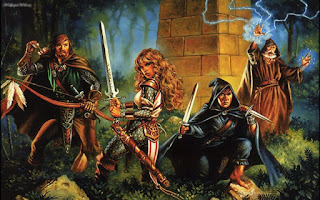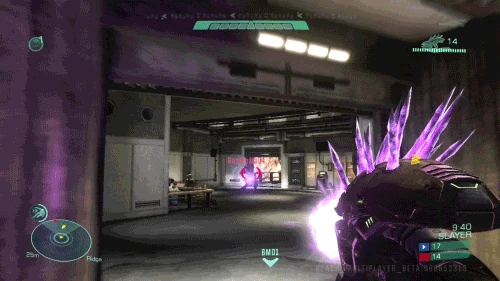Most players are familiar with character advancement in terms of levels. You grind exp until you get a new level, right? Well no, just like how many Trpgs don't have classes, many don't have levels or exp. Often levels tends to go along with classes. But let's get to the good stuff… how do you advance characters without levels? With loot of course!
Oh and yes, many games eschew loot as well. Players do not track money and pinch pennies, as that can be tedious and a waste of time. Commonly loot is abstracted as a skill or a stat. Sometimes loot itself is entirely inconsequential to the game itself. However, the results are the same; economics is removed as a way for advancement. So now we are back to the original problem. How do you advance characters? How do you show players getting better?
Could you just, like, not?
Well the easiest answer is the laziest. Just don't advance characters. While that is actually pretty lazy, it's not as bad as it sounds. Actually if you are playing a one shot adventure or a short game inspired by a song about trying not to be killed by a ex-disney actor who goes full hannibal lecter in the middle of the woods; well you don't really need character advancement.
Often many games deal with advancement in this way in spirit. Which is a flattering way of saying that lots of games handwave it. A very small amount of books really devote a lot of time or pages to advancement and understanding how that impacts the game; lots of that work is left up to the GM. The concept of a monster manual or encounters with levels themselves likewise isn’t very common.
It's a lot of work to determine monsters and how much damage they deal, and if they are right for the characters to face to create an interesting challenge (and if you characters can even hit those monsters… oh and that exploding dice mechanic isn't going to help you calculate those numbers). There is also the likelihood that the characters create a dynamic that is unique to the party and the monsters that you are likely to face, even if balanced for their level, can be overcome without challenge due to luck or clever thinking. In a way it's kind of a waste to determine or even guess at what players can realistically face... right?
Advancing Forward
The amount of complexity that advancements adds can make it an unattractive mechanic to game designers. But there are many simple ways of performing advancement; often this is tied to character creation or some sort of additional extension to it.
Most point buy systems allow for characters to advance by gaining additional points to invest. This typically leads to better characters and helps players patch over rough spots of their character. But this generally creates a system that makes it easy for a character to specialize at character creation and get fairly powerful early on (basically they just min/max their stats). You tend to end up with a dynamic that reinforces characters specializing their investment. Being a jack of all trades tends to seem like it's not a very useful character path.
Burning Wheel uses a system where you are required to succeed and fail at using a skill to eventually advance it. This is similar to many Crpgs where players advance skills by using them more often (Skyrim is a recent and popular example). However it's really hard to keep track of every time you use your skill (which is why the popular example is a videogame that does that for you).
There is also a social dynamics concern to this whole mess. Unless you are D&D or GURPS or maybe Vampires or Shadowrun, the majority of your players will play once and be done. Nobody is going to play your Regan-era-post-apocalyptic-nuns-on-motorcycles-trpg more than once or maybe twice. Playing Trpgs is an interesting scenario, most players may not play long enough to advance or they may not keep playing because advancement is bad. All you can do is hedge your bets and do work that maybe nobody will see.
How D&D does it
So if some systems can get it to work, how do they do it? Why does D&D advancement even work? Well, it's a combination of how levels work in conjunction with monsters and challenges. Certain set statistics (HP, skill cap/proficiency, saves, base attack bonus) advance with the character’s level. This ends up meaning that lower level characters will generate lower results to rolls, and higher level characters generate higher results. That sounds really dumb and obvious but it has massive ramifications. It means there are average results I can expect form a 1st level character and a 6th level character, 9th level character ect. That small amount of predictability means I can design a monster with comparable rolls and have a reasonable chance of getting a good encounter to happen. I can have things like ‘Challenge Rating’ for traps and monsters and get reasonable results when I pit them against my players.
Now this isn't to say that you can't work this out for other level-less systems before hand, but there is another side effect of levels; it creates a baseline for players. Players now know what stats are good and if they are above or below the average that they should be for that level. This baseline helps players figure out if they are good at something or just ok at it or at what ‘level’ they can operate at and expect to accomplish. D&D creates expectations and adds additional predictability to what was once the realm of guesswork and fudging numbers.
Oh and as far as loot and gold goes… well.. It's kinda like experience but it's for upgrading your gear. There is a reason why a lot of systems eschew loot, its just another redundant way of advancement (sort of).
What does this mean?
Well there are a lot of things to think about when it comes to advancement and it certainly doesn't mean that levels or additional skill points or no advancement at all is the way to go. However what it does help with is showing the strengths of each system. It means there is no perfect system until you determine what the rpg is going for and how it should be used.
What this certainly means though is that this idea that you should have classes and levels or only have a skill based system or have no advancement is wrong. No dogmatic adherence to any of these is required for a game to be a proper rpg.
It’s also important to remember that a lot of rpgs can come from many other sources. Mechanics are certainly not limited to d&d and GURPS and if you are willing to dig around in source material or borrow from other Trpgs you can find a lot more interesting systems out there.
In a way I'm saying you have permission to do whatever is correct for your game with the caveat that you should be aware of they common systems used and why. Make the choices about advancement for good reasons.















